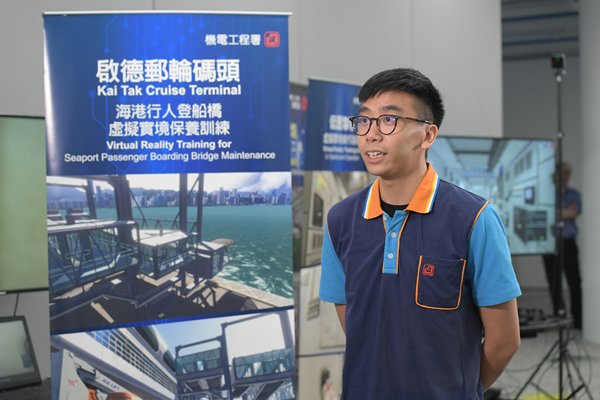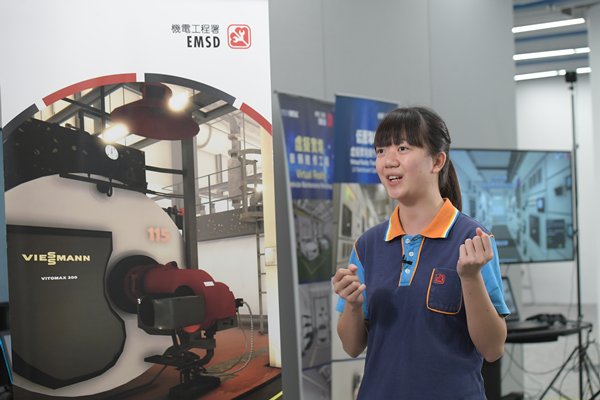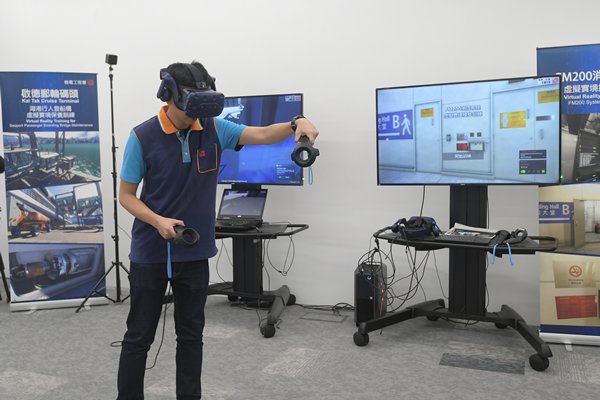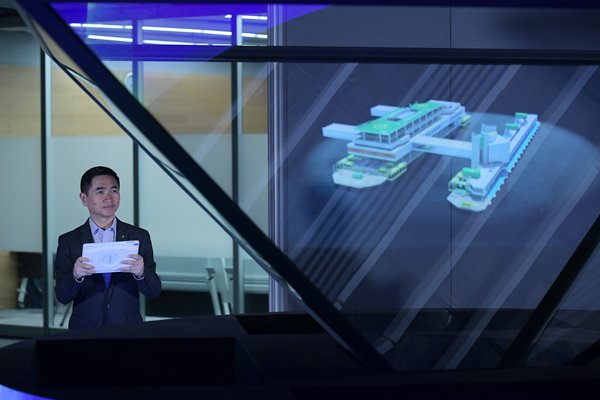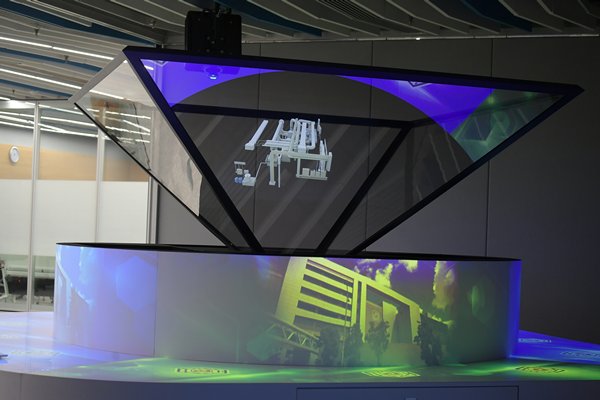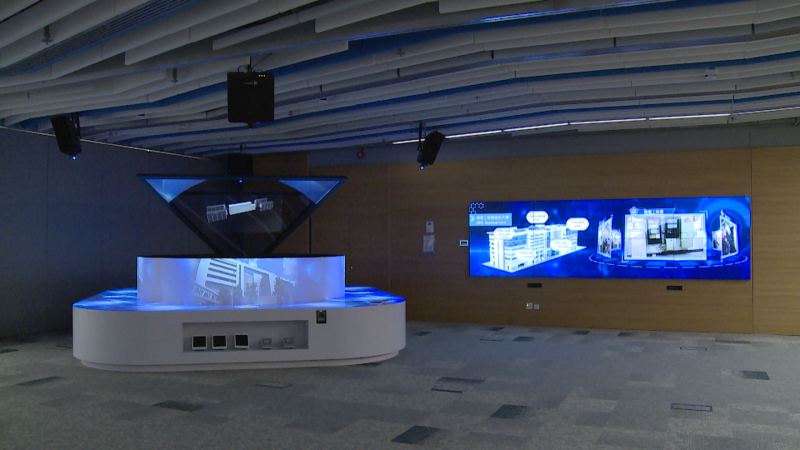Innotech safely trains technicians
To mark the Electrical & Mechanical Services Department’s 70th anniversary it built the state-of-the-art Interactive Learning Centre.
Launched in September last year, it applies innovation and technology to talent training. Some of its training modules apply virtual reality (VR) technology to provide a realistic experience of maintaining engineering systems such as seaport passenger boarding bridges.
“The Passenger Boarding Bridges at Kai Tak Cruise Terminal are in the restricted area. The VR training simulator can help us with maintenance practice first. We can get to know the maintenance steps and safety procedures. Then I am more confident about going to work in the Cruise Terminal,” explained Electrical & Mechanical Services Department Technician Trainee Lo Ka-lok.
Realistic scenarios
Mr Lo and Cheung Hiu-ching joined the department as technician trainees in 2016. They will take turns in carrying out repair work on electrical and mechanical (E&M) facilities in different government buildings.
Ms Cheung has been using VR training to hone her skills for operating a hospital’s boiler system. One scenario she trained for was the “water-hammer effect” - when condensation in a pipe builds up around a pocket of steam, turning it into water so rapidly that it creates a force strong enough to break the pipe.
“The mentor said we need to open the valve slowly to prevent the water-hammer effect.
“Using the VR system we can see what the water-hammer effect is. We can see the pipe burst and spray steam in virtual reality, which reminds us of the advice our mentor gave us that day,” Ms Cheung said.
Risk-free training
The Interactive Learning Centre covers an area of 800 sq m and is currently training around 700 technicians. It applies innovation and technology to enable trainees to practise procedures in a safe environment and raise their safety awareness.
Electrical & Mechanical Services Department Senior Engineer Andy Kwan highlighted the advantages of using VR training simulators.
“They can learn various E&M equipment without affecting the normal operation of the buildings, and also without wasting any consumables.
“The most difficult part is the work with the programme designer to provide the software for the virtual reality training simulators.”
Another outstanding training feature is a hologram projection system which delivers 3D images of E&M equipment. This is especially useful for learning about facilities which are not easily accessible and helps trainees become familiar with the actual work environment and enhance their efficiency.
“Trainees feel happy about this centre because there is a new way to learn and to pick up new knowledge. They find it very interesting and it is easier to learn, plus they can share all the experience with other trainees,” Mr Kwan added.
There are two Cave Automatic Virtual Environment systems at the centre. The system displays an authentic view of Hong Kong Children's Hospital and Tin Shui Wai Hospital through the application of Building Information Modelling-Asset Management technology.
By providing realistic scenarios through technology, the trainees can increase their understanding of government buildings and installations including their technical details such as operating principles and structural plans.
